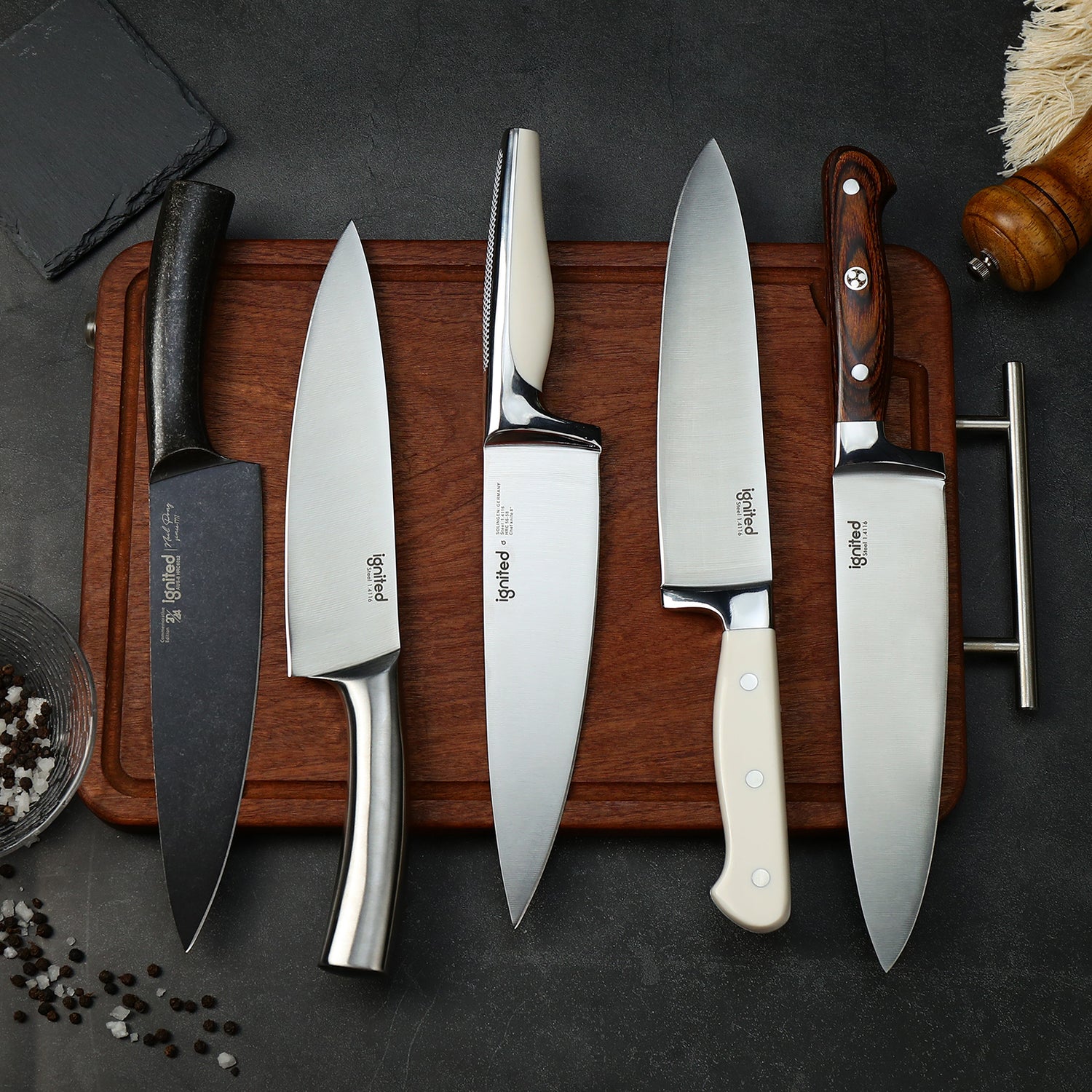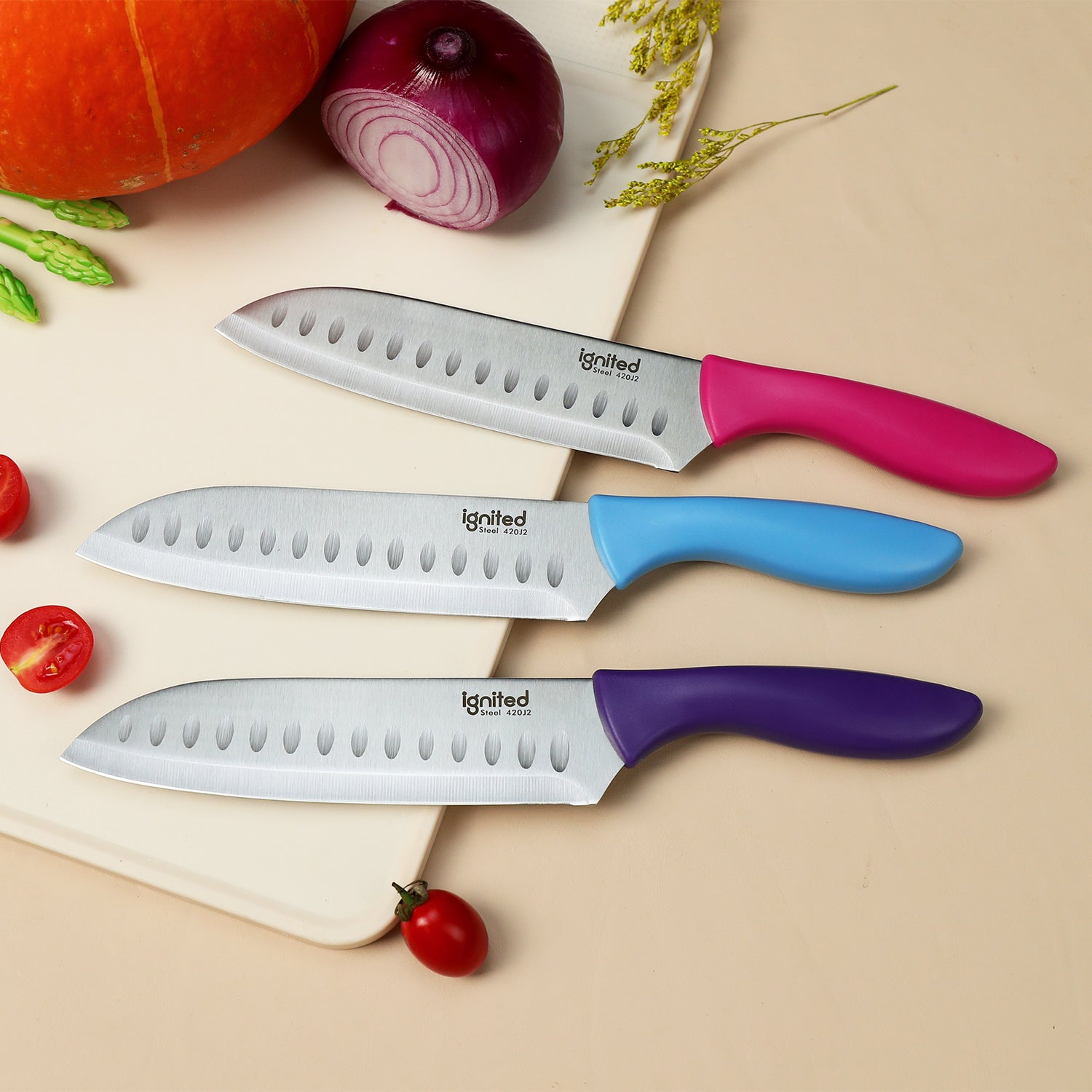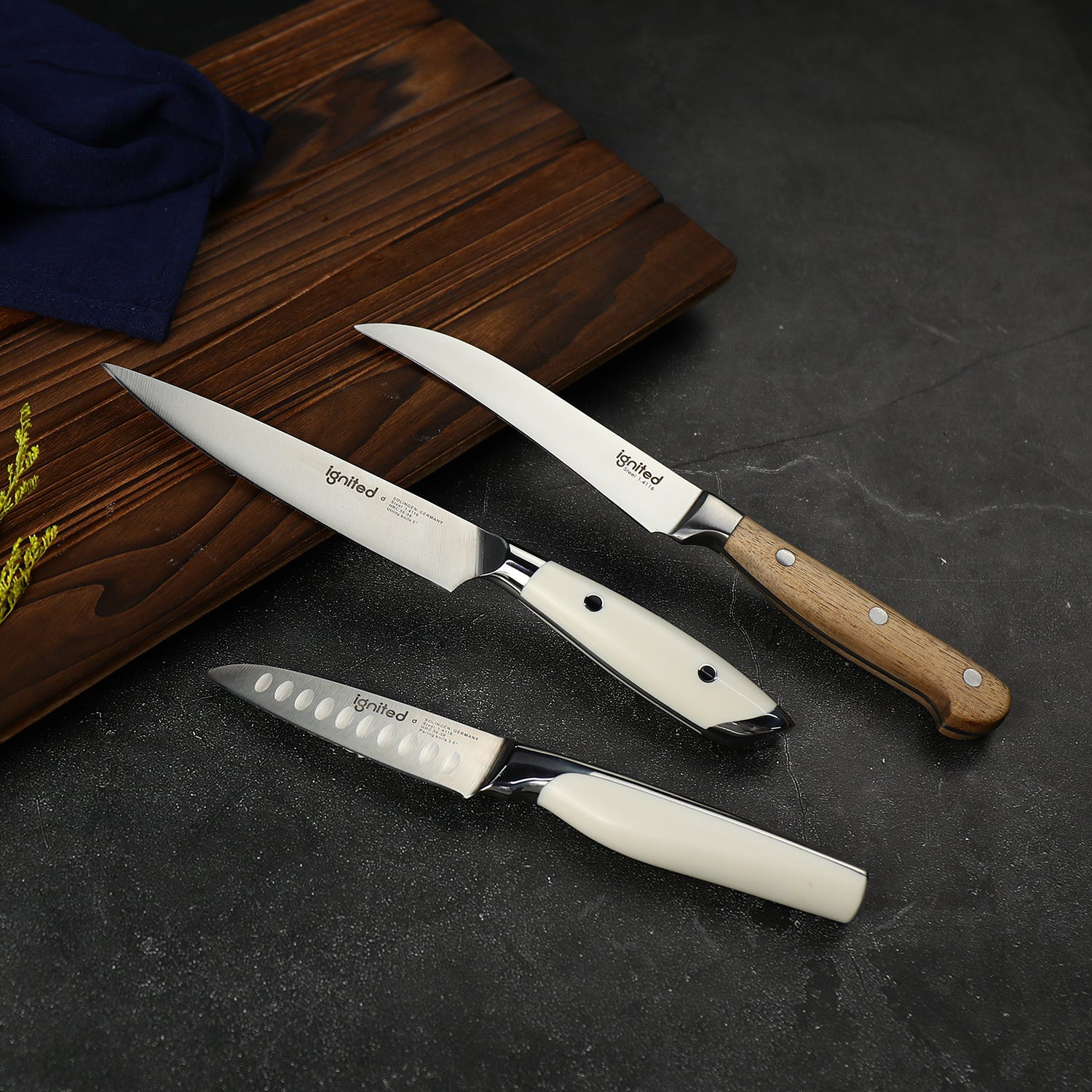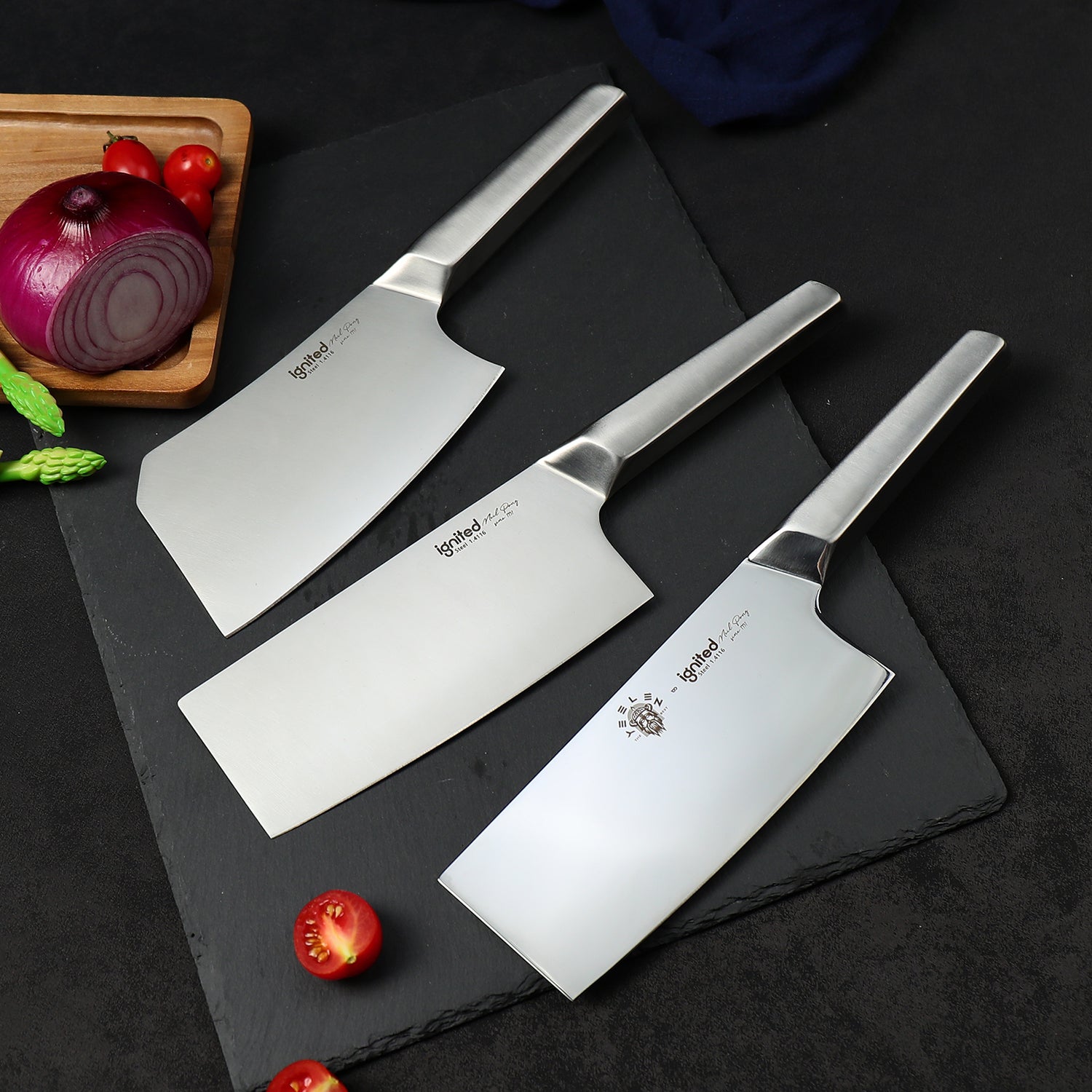A steak knife is more than just a table knife — it’s an essential tool designed to cut through steaks and other firm meats cleanly and effortlessly. From its serrated or straight blade to its comfortable handle, a well-made steak knife ensures that every bite retains its flavor and texture. In this guide, Ignited Cutlery explains what a steak knife is used for, its history, the different types, and how to choose and care for your steak knives.

Content Menu
- What Is a Steak Knife?
- History of the Steak Knife
- Primary Uses of a Steak Knife
- Cutting Steaks and Firm Meats
- Precision Cutting
- Additional Uses of a Steak Knife
- Types of Steak Knives
- How to Choose a Steak Knife
- Caring for Your Steak Knives
- Conclusion
- FAQs
What Is a Steak Knife?
A steak knife is a sharp table knife typically featuring a pointed tip and either a serrated or straight cutting edge. Serrated steak knives have small, saw-like teeth that make it easier to slice through cooked meats with a tough crust or seared exterior, while straight edge blades offer cleaner cuts for tender meats. Handles vary in material — from classic wood to modern composites — designed for durability and comfortable grip during dining.
History of the Steak Knife
Before the 20th century, most dining knives were not particularly sharp and required regular sharpening. The widespread use of stainless steel after World War II allowed steak knives to hold a sharper edge for longer periods without rusting. Serrated edges gained popularity because they maintained cutting efficiency even as the blade dulled slightly over time. Today, steak knives remain an indispensable part of Western dining culture, especially for meat-centric meals.
Primary Uses of a Steak Knife
Cutting Steaks and Firm Meats
The main purpose of a steak knife is in its name: cutting steaks. It’s designed to slice effortlessly through cooked beef, pork chops, lamb, and other firm meats, delivering clean cuts without tearing fibers or losing juices. This keeps each bite tender and flavorful.
Precision Cutting
A quality steak knife provides diners with control and precision at the table. The fine edge allows for cutting around bones or fat with minimal effort, giving a refined dining experience compared to dull, generic table knives.
Additional Uses of a Steak Knife
While primarily used for steak, a good steak knife is a versatile addition to any kitchen or dining set. It can handle tasks such as slicing roasts, cutting grilled chicken, portioning sausages, and even working well for certain vegetables and crusty breads when a chef’s knife isn’t at hand.
Types of Steak Knives
Steak knives are typically categorized by their blade type:
- Serrated Steak Knives: Ideal for cutting through tough exteriors and retaining sharpness over time with minimal maintenance.
- Straight Edge Steak Knives: Provide a cleaner, smoother cut but require regular sharpening for best performance.
- Hollow Edge Steak Knives: Feature small indentations (granton edge) to reduce drag and prevent food from sticking to the blade.
How to Choose a Steak Knife
When selecting steak knives for your home or restaurant, consider:
- Blade Material: High-quality stainless steel resists corrosion and stays sharper longer.
- Edge Type: Choose between serrated for low maintenance or straight edge for clean, smooth cuts.
- Handle Comfort: Look for an ergonomic, balanced handle that feels secure in hand.
- Style: Match the design with your existing tableware for a cohesive dining aesthetic.
Caring for Your Steak Knives
- Always hand wash your steak knives to avoid dishwasher damage and detergent corrosion.
- Dry them immediately after washing to prevent rust spots.
- Sharpen straight edge knives regularly; serrated blades may need occasional professional honing.
- Store knives in a block or protective case to maintain blade sharpness and ensure safety.
Conclusion
A steak knife is a must-have for any meat lover. Whether you’re serving a prime ribeye or slicing into a juicy grilled pork chop, the right steak knife enhances your dining experience by delivering clean, effortless cuts every time. At Ignited Cutlery, we believe a quality steak knife is a small investment that makes every meal more satisfying.
FAQs
Q: Can I use a steak knife for other kitchen tasks?
A: Absolutely! Steak knives are handy for slicing tomatoes, crusty bread, or small fruits when a larger kitchen knife is not necessary.
Q: Do steak knives need to be sharpened?
A: Straight edge blades should be sharpened regularly, while serrated edges require less frequent sharpening but benefit from professional maintenance.
Q: Are steak knives dishwasher safe?
A: Hand washing is strongly recommended to protect the blade’s edge and maintain handle integrity.
Q: What size steak knife is best?
A: Most steak knives are 4 to 7 inches long — this range works well for most dining settings and hand sizes.




